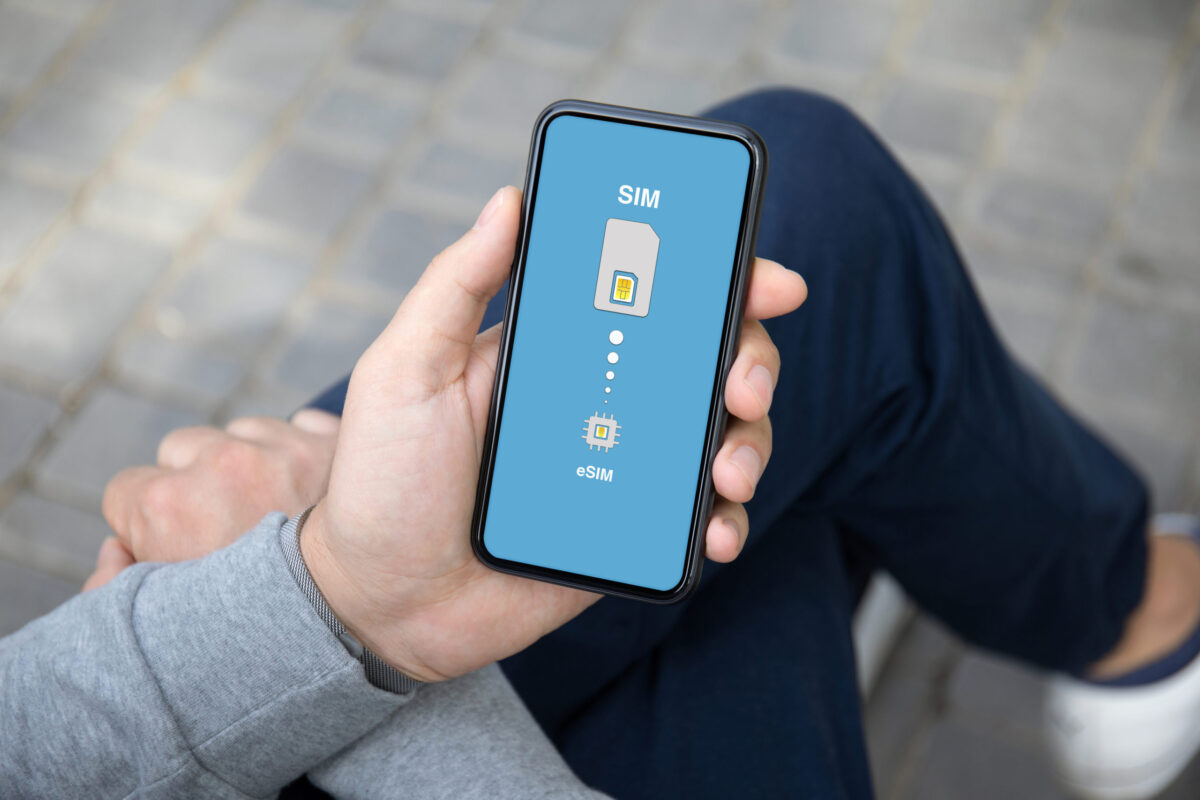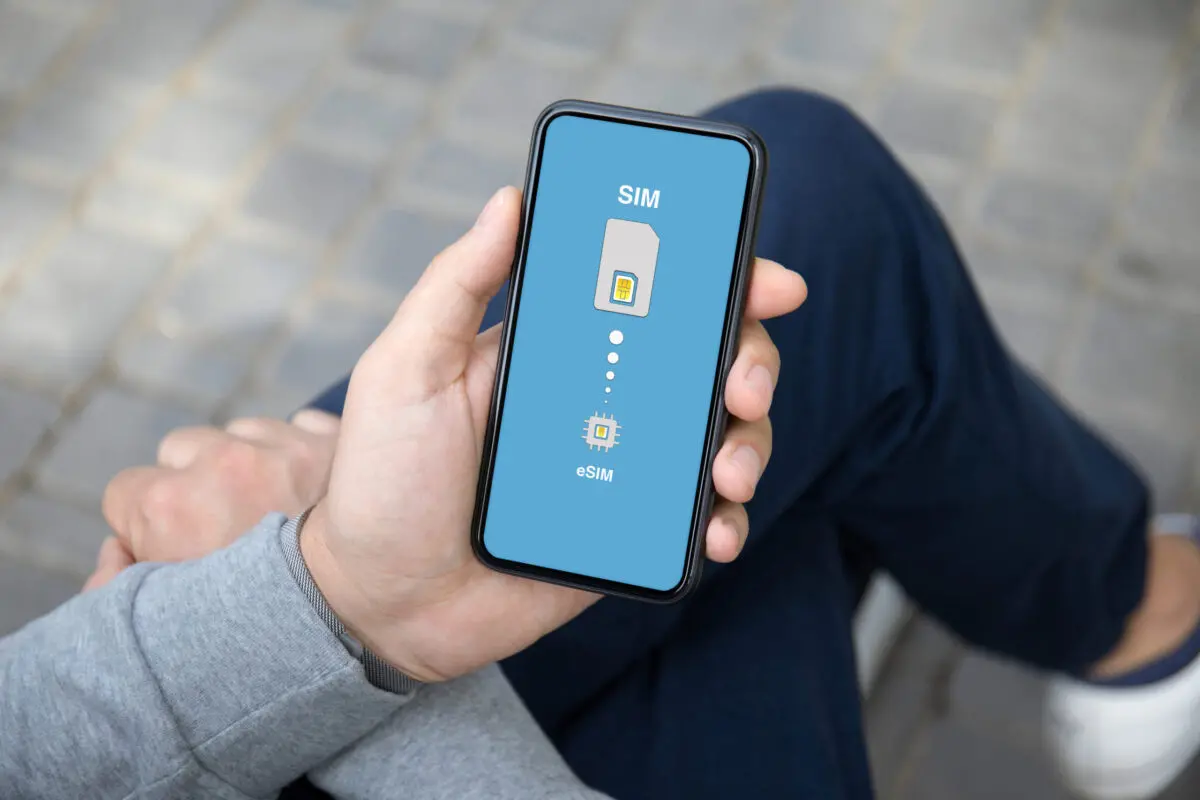eSIM Basics
How To Get An eSIM (Step-By-Step Guide)

How To Get An eSIM
Getting an eSIM involves a few simple steps:
- Check if your device is compatible with eSIM technology.
- Choose an eSIM service and select a suitable plan.
- Download your eSIM and activate it before you travel typically by using a QR code.
What is an eSIM?
An eSIM, or embedded SIM, is a digital SIM card that is embedded directly into a device’s hardware. Unlike traditional physical SIM cards, eSIMs are reprogrammable, allowing users to switch between carriers and plans without the need to physically swap out a SIM card.
How To Get an eSIM From eSIM4
You can also purchase an eSIM plan from a provider like Airalo. Getting an Airalo eSIM is easy. Follow these steps to get started:
- Visit the eSIM4 website.
- Buy an eSIM online for your destination (eSIM4 has eSIMs for 200+ countries and regions worldwide).
- We’ll send you an email with a QR code for you to scan (just follow the steps in the email)
- Scan the QR code
- Turn on your eSIM when you arrive at your destination – that’s it!
Choosing an eSIM4 Plan
Unlike your mobile plan, eSIM4 plans are prepaid. When you download an eSIM4 plan, you know exactly what you’re paying for.
Here are a few things to consider when picking an eSIM plan:
- Data: The amount of data preloaded onto the eSIM (e.g., 1GB, 3GB, 5GB, etc.).
- Validity Period: How long you can use the eSIM (e.g., 7 days, 15 days, 30 days, etc.).
- Price: The value of the eSIM package (e.g., $5, $10, $15, etc.).
- Location: The countries and regions where you can use the eSIM. You can choose from local, regional, and global eSIMs.
- Activation Policy: If your eSIM activates upon installation or when you connect to a supported network at your destination.
- Top-Up Option: If you can top up your plan.
Advantages of Using an eSIM
Why even use an eSIM? Here are some great reasons why our customers are using eSIMs:
Easy Switching Between Carriers
eSIMs make switching carriers a breeze. No more ordering new SIMs, waiting for delivery, or fiddling with SIM trays. Just a few taps on your device, and you’re good to go with a new carrier. Take advantage of great deals and promotions without any hassle!
Multiple Plans
eSIMs let you have multiple plans on a single device. Perfect for keeping work and personal data separate. Store all your separately and switch between them with a few taps without every having top remove your SIM card.
Avoid Global Roaming Costs
Travelling abroad? Download a local eSIM profile before you leave, activate it when you arrive, and enjoy a local number and data plan without the usual roaming costs. Keep your regular home number active on the same device, so you never miss important calls or texts.
Physical SIMs
eSIMs are the future of mobile convenience. No more worrying about losing or damaging physical SIMs or running out of space for all the SIMs you need. With eSIMs, everything is stored digitally on your device for a smarter, more streamlined experience.
Check Device Compatibility
Before you start looking into getting an eSIM, it’s important to make sure your device actually supports this technology. Not all phones and tablets work with eSIMs, so this is a crucial step to avoid any disappointment later on.
Which Devices Support eSIM?
Many of the latest smartphones and tablets come with eSIM support, but it’s not a feature you’ll find on every device out there. Here are some popular devices that do offer eSIM compatibility:
- Apple iPhone XS, XS Max, XR, and newer models
- Apple iPad Pro (3rd generation and newer), iPad Air (3rd generation and newer), iPad (7th generation and newer), and iPad mini (5th generation and newer)
- Google Pixel 3, 3a, 4, 4a, 5, and newer models
- Samsung Galaxy S20, S20+, S20 Ultra, S21, S21+, S21 Ultra, and newer models
- Samsung Galaxy Z Flip, Z Flip 5G, Z Fold2 5G, and newer models
- Samsung Galaxy Note 20, Note 20 Ultra, and newer models
- Microsoft Surface Duo
This isn’t a complete list, but it covers many of the most popular eSIM-compatible devices available right now. See a complete list of eSIM supported mobile devices here.
How to Check if Your Device Supports eSIM
If you’re not sure whether your device supports eSIM, don’t worry – it’s easy to check. Here’s what you can do:
- Check your device’s specifications: Look for mentions of “eSIM” or “dual SIM” in the technical specs of your phone or tablet. You can usually find this information on the manufacturer’s website or in the device’s manual.
- Look in your device’s settings: On most eSIM-compatible devices, you’ll find an “Add Mobile Plan” or “Add Cellular Plan” option somewhere in the settings menu. On iPhones, for example, you can go to Settings > Mobile Data > Add Mobile Data Plan. If you see this option, your device likely supports eSIM.
- Contact your carrier: If you’re still unsure, reach out to your mobile carrier’s customer support. They’ll be able to tell you whether your specific device is eSIM-compatible and if they offer eSIM plans.
Choose a Carrier that Offers eSIM
Now that you know your device is eSIM-compatible, it’s time to find a mobile carrier that offers eSIM plans. Not all carriers have jumped on the eSIM bandwagon yet, but many of the big names in the industry do provide this option.
Comparing eSIM Plans and Pricing
Just like with traditional SIM plans, eSIM plans come in various shapes and sizes. Some carriers offer pay-as-you-go options, while others focus on monthly contracts. Data allowances, call minutes, and text message limits can also vary considerably between plans and providers.To find the best eSIM plan for your needs, consider the following factors:
- Data allowance: How much mobile data do you typically use each month? Make sure to choose a plan with enough data to cover your needs, whether you’re a light user or a data-hungry streamer.
- Pricing: Of course, you’ll want to find a plan that fits within your budget.
- Coverage: Not all carriers offer the same level of coverage in all areas. Check each carrier’s coverage maps to ensure you’ll have reliable service where you live, work, and travel.
Set Up the eSIM on Your Device
You’ve got your eSIM plan, and you’ve downloaded the eSIM profile – great! Now it’s time to set up the eSIM on your device so you can start using it for calls, texts, and data.
Access Device Settings
The first thing you’ll need to do is find the eSIM settings on your device. Here’s where to look:
- iPhone: Go to Settings > Mobile Data > Add Mobile Data Plan.
- Android: Go to Settings > Network & Internet > Mobile network > Carrier.
- Other devices: Check your device’s user manual or search online for instructions specific to your make and model.
Once you’ve found the eSIM settings, you’re ready to add your new eSIM profile.
Add the eSIM Profile
In most cases, your device will automatically detect the downloaded eSIM profile and prompt you to add it. Simply follow the on-screen instructions to complete the process.
If your device doesn’t automatically detect the eSIM profile, you may need to manually add it. Look for an option to “Add Mobile Plan” or “Add Cellular Plan” in your device’s eSIM settings, then select the downloaded eSIM profile.
Troubleshooting Common Issues
While setting up an eSIM is usually a smooth process, there’s always a chance you might run into a few hiccups along the way. Don’t worry, though – most eSIM-related issues can be resolved quickly with a bit of troubleshooting.
eSIM Not Detected
If your device isn’t detecting your new eSIM, try the following:
- Restart your device: Sometimes, a simple restart can resolve eSIM detection issues. Turn your device off, wait a few seconds, then turn it back on and check if the eSIM is now detected.
- Check for software updates: Make sure your device is running the latest version of its operating system. Software updates often include fixes for eSIM-related bugs and glitches.
- Re-download the eSIM profile: If the eSIM profile was corrupted or incomplete, your device may not be able to detect it. Try deleting the eSIM profile and downloading it again from your carrier.
Activation Problems
If you’re having trouble activating your eSIM, here are a few things to try:
- Double-check your activation code: Make sure you’ve entered the correct activation code provided by your carrier. If you’re unsure, contact your carrier’s customer support for assistance.
- Ensure you have a stable internet connection: eSIM activation usually requires a stable internet connection. If you’re on a weak or patchy connection, try moving to an area with better coverage or connecting to a Wi-Fi network.
- Contact your carrier: If you’ve tried everything else and still can’t activate your eSIM, reach out to your carrier’s customer support. They may need to manually activate the eSIM on their end.
Network Connectivity Issues
If your eSIM is activated but you’re having trouble connecting to your carrier’s network, try these troubleshooting steps:
- Toggle airplane mode: Turn on airplane mode for a few seconds, then turn it off again. This can sometimes reset your device’s network connection and resolve connectivity issues.
- Check your APN settings: If your APN settings are incorrect, you may not be able to connect to your carrier’s network. Double-check that you’ve entered the correct APN details provided by your carrier.
- Ensure you’re in a covered area: eSIMs rely on the same network coverage as traditional SIM cards. If you’re in an area with poor or no coverage, you may experience connectivity issues. Check your carrier’s coverage map to ensure you’re in a supported area.







